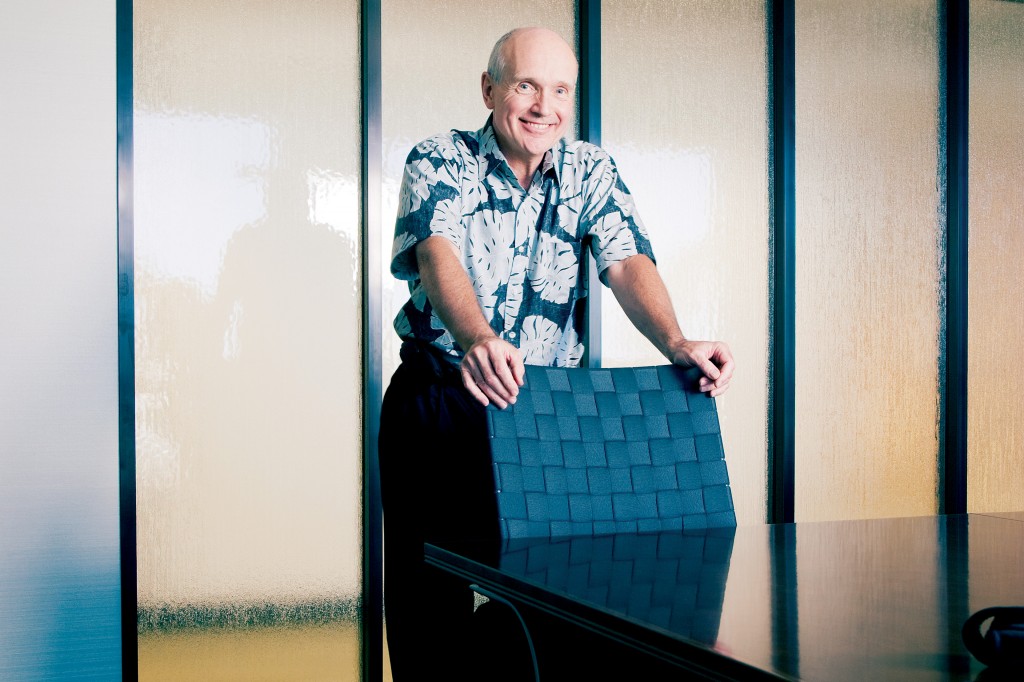Down, Not Out

There’s no denying it’s been a brutal three years for Central Pacific Bank and its parent company, Central Pacific Financial Corp.
The bank’s aspiration of grabbing more market share with its 2004 merger with City Bank has all but disappeared. A once-promising foray into loans to California home builders and developers turned disastrous when the sub-prime mortgage crisis hit, while a stubborn economic downturn cut into its efforts to expand here.
There have been quarterly losses, branch closures and changes in top management, who have taken pay cuts along the way. Last December, the bank agreed to a consent order with the Federal Deposit Insurance Corp. and the state Division of Financial Institutions that requires it to improve its capital position, asset quality and liquidity.
All of that is bound to make some customers nervous. Central Pacific’s deposits have shrunk while other banks in town have substantially gained deposits in the past three-and-a-half years.
According to FDIC reports, Central Pacific’s total deposits tumbled by $800 million to $3.2 billion between the end of 2007 and June 30, 2010, the latest available data, which amounts to a 20 percent decline. American Savings Bank lost 8 percent of its deposits in the same period.
By comparison, there was double-digit growth at the state’s two largest banks:
• First Hawaiian Bank, up 15.4 percent to $10.5 billion in deposits;
• Bank of Hawaii, up 17.4 percent to $9.3 billion.
CPB acknowledges that some of the deposit losses were from customers spreading their deposits among various banks in Hawaii.
It also says there’s a whole lot more to the story. Much of the deposit shrinkage has been deliberate, CPB says.
“As we vacated California, obviously the need for deposits declined,” says CEO John Dean, a veteran banker who was recruited in March to oversee CPB’s recovery plan.
The lower deposits also fits with CPB’s recovery plan of becoming a smaller bank focused on deposits and traditional markets in Hawaii. As such, the bank is reducing assets in keeping with a goal of improving financial ratios that are scrutinized by regulators.
Roughly half of the $800 million deposit decline occurred last year, as the bank pulled back from brokered deposits and asked government clients to convert time deposits into repurchase agreements. Brokered deposits are typically large amounts on which the bank must pay heftier interest rates.
While getting rid of higher-cost deposits, the bank also has focused on trying to attract more local individual and business customers. Last year, CPB was able to boost these so-called “core deposits” by about $146 million, in part by offering higher savings and CD rates than First Hawaiian and Bank of Hawaii.
Randy Havre, a venture capitalist and former securities broker, says a decline in deposits isn’t good, but was necessary for CPB as it works to get its capital ratios back in line. He says Dean is respected in financial circles and has done a credible job so far at CPB and Central Pacific Financial.
Randy Havre, a venture capitalist and former securities broker, says a decline in deposits isn’t good, but was necessary for CPB as it works to get its capital ratios back in line.
“It looks from the outside that the regulators are following CPF’s progress closely and are supportive of John Dean and his team,” Havre says.
It remains to be seen if Dean’s feverish work on behalf of Central Pacific will pay off and the vision of a well-funded, smaller bank concentrated on the Hawaii market becomes a reality. Some of the talk that regulators would arrange CPF’s acquisition by a larger bank has died as Dean has looked to bring in new capital and investors.
Meanwhile, Dean, who is credited with three bank turnarounds on the Mainland, including Silicon Valley Bank, is confident about CPB’s recovery.
“I think we’re going to grow deposits over time,” he says.
| Deposits at Hawaii’s leading banks (in thousands of dollars) | ||||
| 12-31-2007 | 6-30-2010 | Difference | Percent Change | |
| First Hawaiian Bank | $9,107,840 | $10,511,827 | $1,403,987 | 15.4% |
| Bank of Hawaii | $7,948,690 | $9,330,063 | $1,381,373 | 17.4% |
| American Savings Bank | $4,402,274 | $4,040,516 | $-361,758 | -8.2% |
| Central Pacific Bank | $4,016,244 | $3,213,272 | $-802,974 | -20% |
| Territorial Savings Bank | $903,728 | $1,123,612 | $219,884 | 24.3% |
| Hawaii National Bank | $516,713 | $528,608 | $11,895 | 2.3% |
| Finance Factors | $432,708 | $508,287 | $75,570 | 17.5% |
| Pacific Rim Bank | $95,254 | $116,232 | $20,978 | 22% |
| Ohana Pacific Bank | $53,499 | $64,739 | $11,240 | 21% |
Source: FDIC Reports






